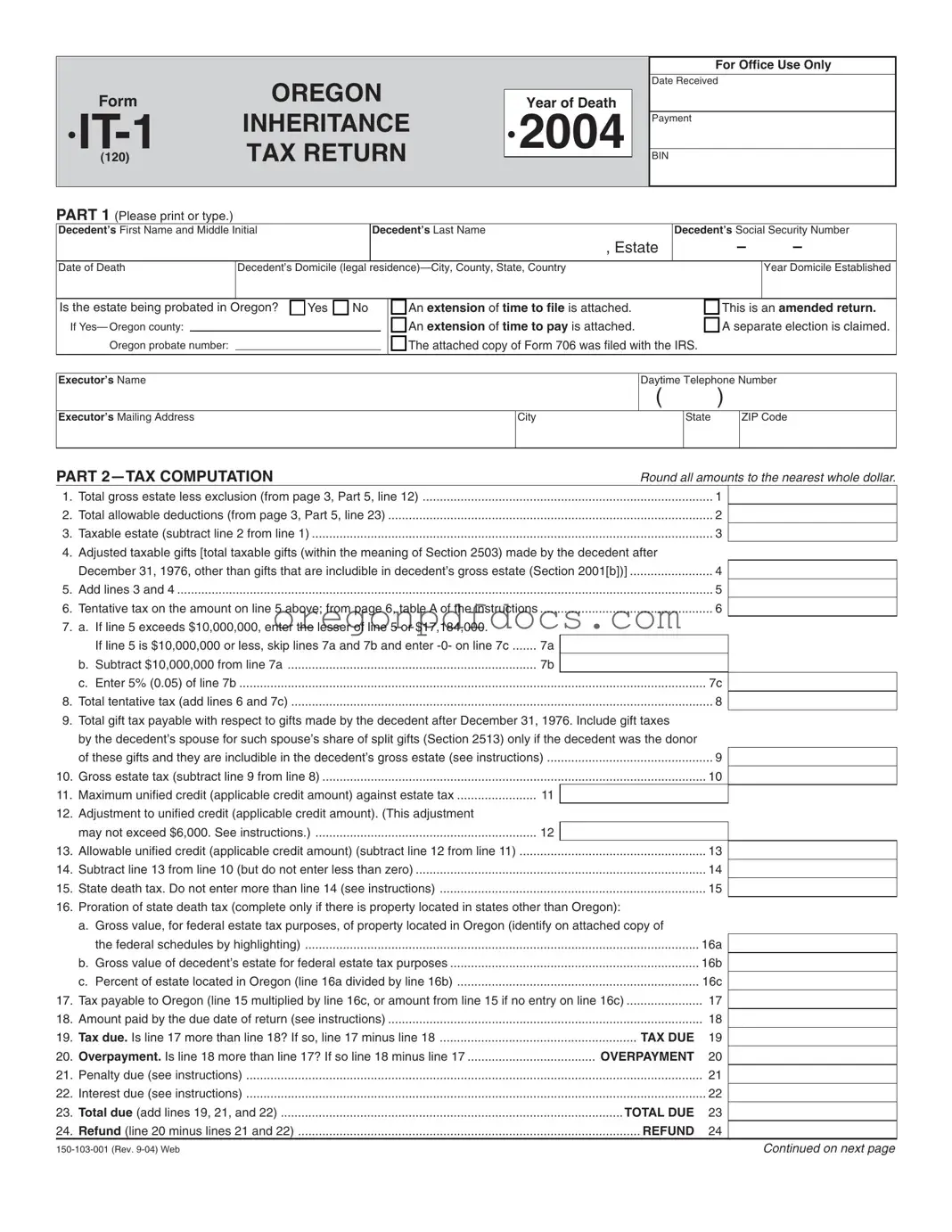The Oregon IT-1 form plays a crucial role in the administration of estates in the state, particularly when it comes to the assessment of inheritance taxes. This form must be filed by the executor of an estate, and it requires detailed information about the decedent, including their name, Social Security number, and date of death. Additionally, it prompts the executor to disclose the decedent's domicile, which is essential for determining tax obligations. The form also includes sections for tax computation, where the executor calculates the taxable estate by considering gross estate values and allowable deductions. Specific questions regarding elections by the executor, such as whether to elect alternate valuation or special use valuation, are included to provide flexibility in tax reporting. Furthermore, the IT-1 requires the attachment of relevant documents, such as the death certificate, and it offers space to report on the marital status of the decedent and the benefits received by surviving family members. Overall, the Oregon IT-1 form is a comprehensive document that facilitates the estate settlement process while ensuring compliance with state tax laws.




 Yes
Yes
 No
No
 No
No
 No
No Yes
Yes 
 Yes
Yes
 Yes
Yes
 Yes
Yes No
No 
 No
No
 No
No
 No
No

